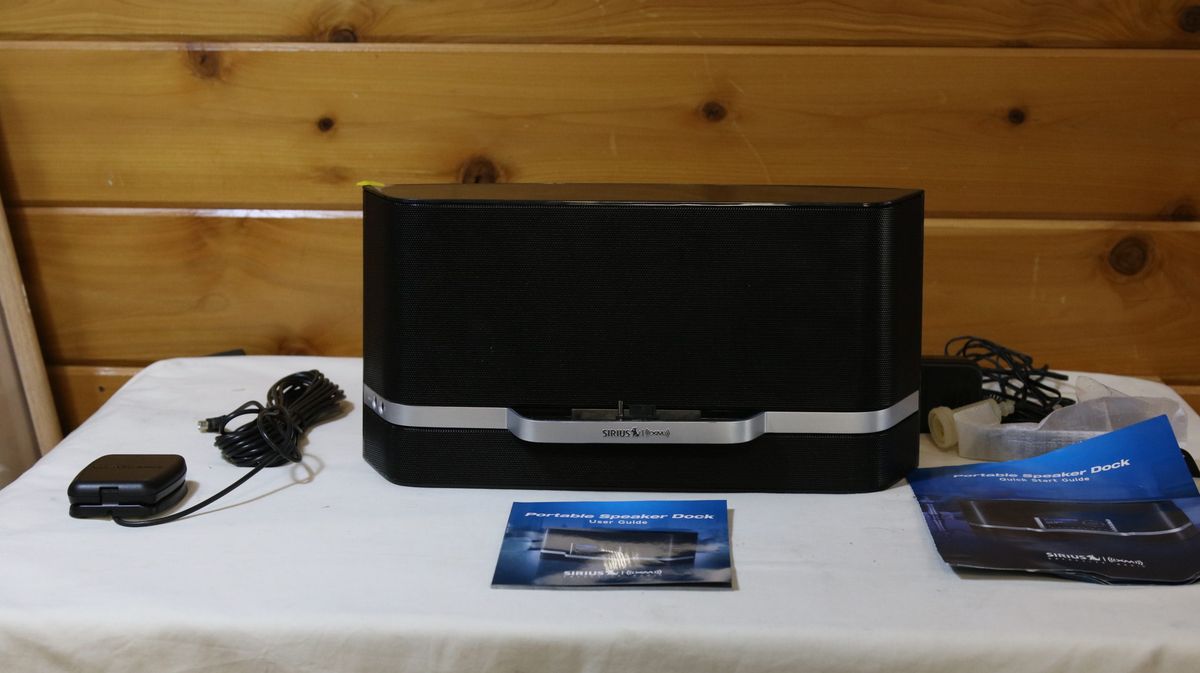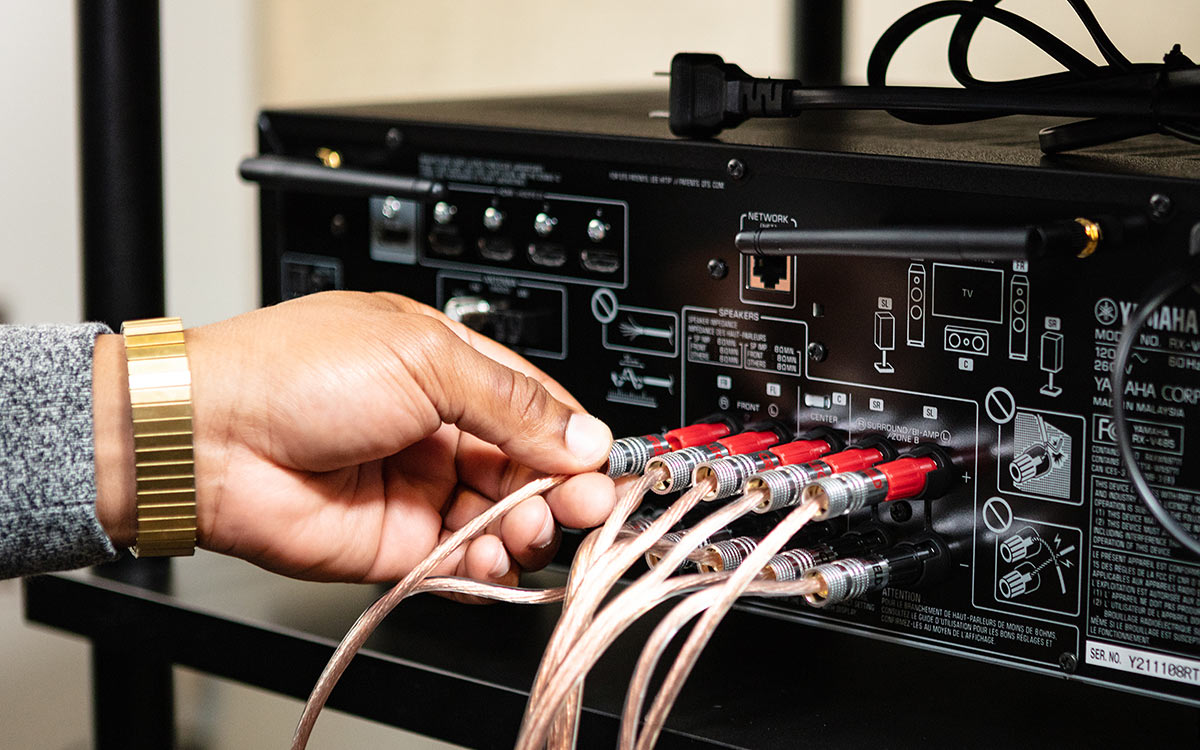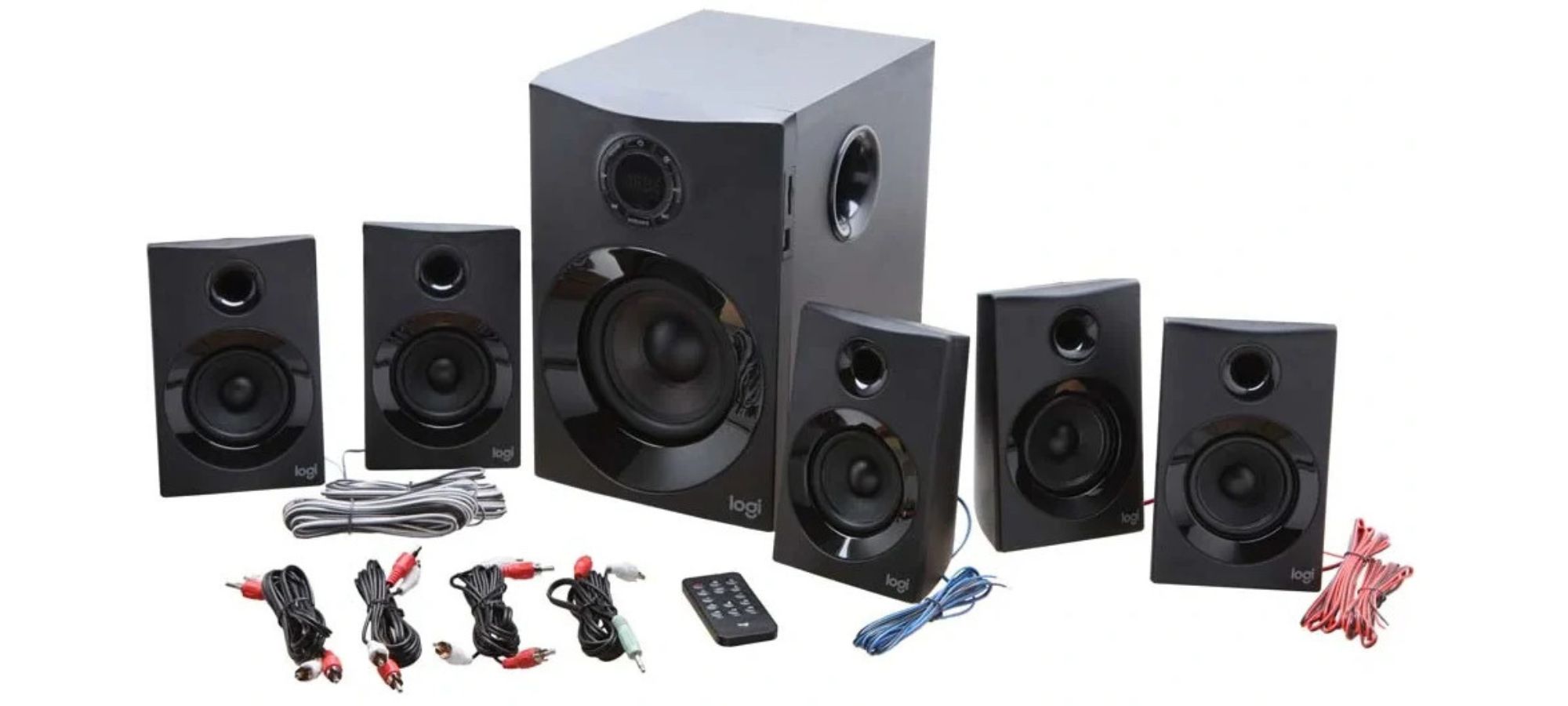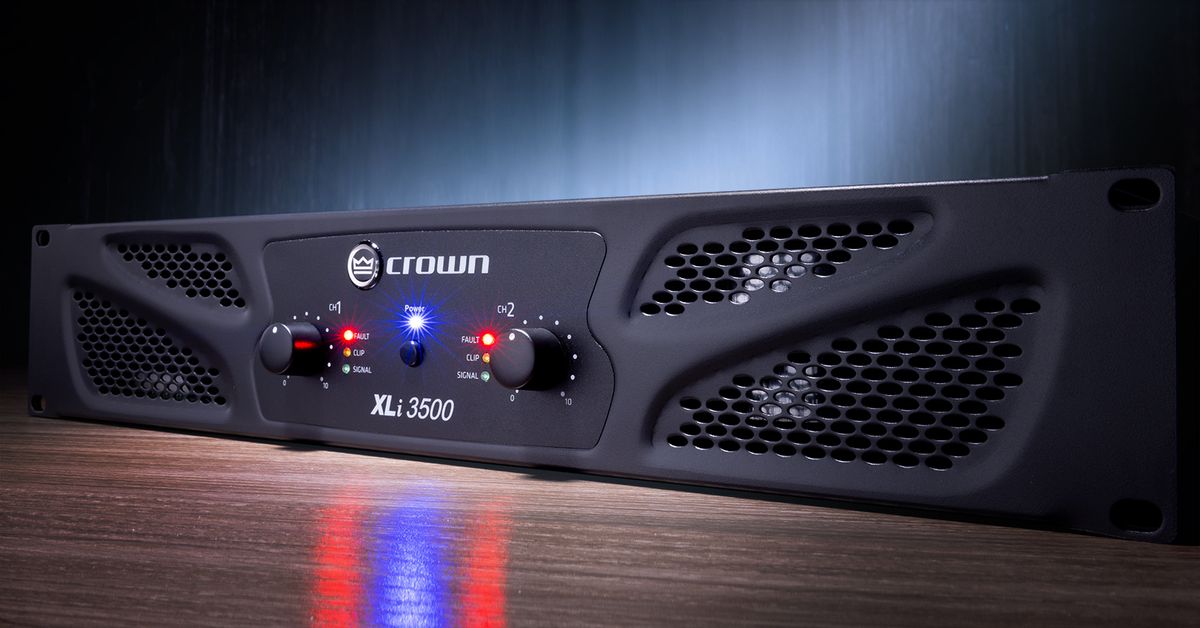Home>Production & Technology>Stereo>How To Buy A Home Stereo System
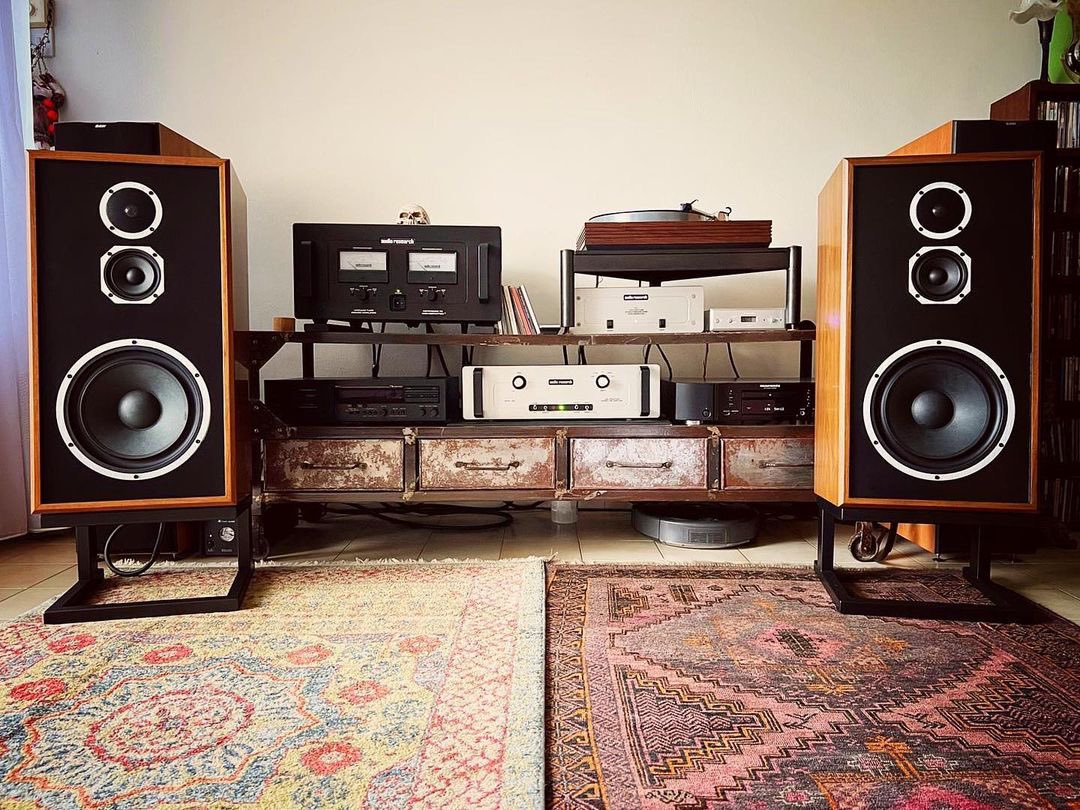

Stereo
How To Buy A Home Stereo System
Modified: January 22, 2024
Learn how to buy the perfect home stereo system. Find high-quality stereos at affordable prices. Enhance your audio experience with the best stereo options available.
(Many of the links in this article redirect to a specific reviewed product. Your purchase of these products through affiliate links helps to generate commission for AudioLover.com, at no extra cost. Learn more)
Table of Contents
- Introduction
- Understanding your needs and preferences
- Setting a budget
- Researching different brands and models
- Deciding on the type of system (traditional stereo or wireless)
- Considerations for the amplifier and receiver
- Choosing the right speakers
- Determining the best audio format and connectivity options
- Exploring additional features and accessories
- Seeking expert advice and reviews
- Making the final purchase decision
- Setting up and optimizing your new home stereo system
- Conclusion
Introduction
Welcome to the world of home stereo systems, where you can immerse yourself in high-quality audio right in the comfort of your own living space. Whether you’re a music enthusiast, a movie buff, or simply want to enhance your listening experience, a home stereo system is a perfect addition to your entertainment setup. But with so many options available in the market, it can be overwhelming to choose the right one that suits your needs and preferences.
In this guide, we will walk you through the process of buying a home stereo system, step-by-step, to ensure that you make an informed decision. From understanding your needs and preferences to setting a budget, researching different models, and considering key components like amplifiers, speakers, and audio formats, we’ve got you covered.
Whether you are a beginner or an experienced audiophile, the world of home stereo systems can be a complex one to navigate. But fear not; we are here to simplify the process and help you find the perfect system that will deliver pristine audio quality and elevate your listening experience.
Throughout this guide, we will provide valuable insights, expert recommendations, and practical tips to assist you in your search for the best home stereo system. From the basics of audio terminology to the latest advancements in wireless connectivity, we aim to equip you with the knowledge you need to make an informed decision.
So, get ready to embark on a journey through the world of home stereo systems and discover the perfect setup that will bring your audio to life. Let’s dive in and explore the exciting possibilities that await you in the realm of immersive sound.
Understanding your needs and preferences
Before diving into the wide array of options available for home stereo systems, it’s essential to take a moment to assess your needs and preferences. Understanding what you want to achieve with your new audio setup will help narrow down your choices and ensure that you select a system that aligns with your goals.
First and foremost, consider what you will be using the stereo system for. Are you primarily interested in listening to music, watching movies, or both? This will influence the specific features you should prioritize when comparing different models.
Next, think about the size and layout of the room where you plan to set up your home stereo system. The dimensions of the room can impact the sound quality and determine whether you should opt for a compact setup or a more powerful system. Additionally, consider whether you want a system that can be easily moved or if it will have a dedicated space in the room.
Another important factor to consider is your personal audio preferences. Do you prefer a warmer, bass-heavy sound, or are you more interested in a balanced and neutral reproduction of audio? This will inform your choice when it comes to selecting amplifiers, speakers, and audio formats.
Additionally, take into account the level of convenience and connectivity you desire. Are you looking for a traditional stereo system with wired connections, or would you prefer the flexibility and convenience of wireless options? Consider whether you want to connect your system to other devices, such as smartphones, tablets, or streaming services, and ensure that the system offers the necessary compatibility.
Furthermore, it’s worth considering whether you have any additional requirements or preferences, such as the ability to play vinyl records, compatibility with surround sound setups, or the inclusion of specific features like built-in voice assistants or multi-room audio capabilities.
By taking the time to understand your needs and preferences, you can narrow down your choices and focus on finding a home stereo system that will truly meet your expectations. With a clear understanding of your audio preferences, room layout, and desired features, you’ll be well-prepared to move on to the next step: setting a budget.
Setting a budget
Setting a budget is an essential step in the process of buying a home stereo system. By determining how much you are willing to spend, you can narrow down your options and focus on systems that are within your price range.
When setting a budget, it’s important to consider the overall cost of the system, including all the necessary components. A home stereo system typically consists of amplifiers, speakers, a receiver, and possibly additional accessories like subwoofers or streaming devices.
It’s important to strike a balance between your budget and the quality of the components you are looking for. While it’s tempting to splurge on high-end equipment, remember that there are excellent options available at various price points. Consider what features are essential to you and allocate your budget accordingly.
It’s also worth noting that setting a budget doesn’t necessarily mean compromising on audio quality. There are many affordable options out there that offer excellent performance and sound reproduction.
If you are on a tight budget, consider buying components separately rather than opting for an all-in-one system. This allows you to prioritize your spending on the components that matter the most to you, such as speakers or amplifiers, while making more economical choices for other parts of the system.
Additionally, keep in mind that the cost of a home stereo system can vary depending on the brand, model, and the specific features it offers. Research different options and compare prices to get a better understanding of what you can expect within your budget range.
While it’s important to set a budget, be open to adjusting it slightly if it means getting a system that meets all your requirements. A slight increase in budget might open up more possibilities and ensure that you are satisfied with your purchase for years to come.
By setting a budget and being mindful of your financial constraints, you can navigate the market more efficiently and focus on finding a home stereo system that strikes the perfect balance between quality and affordability.
Researching different brands and models
Once you have a clear understanding of your needs, preferences, and budget, it’s time to delve into the extensive world of home stereo systems and start researching different brands and models. This step is crucial as it allows you to compare and evaluate the various options available, ensuring that you select a system that meets your requirements.
Start by familiarizing yourself with reputable brands that specialize in audio equipment. Look for brands with a strong reputation for producing high-quality and reliable stereo systems. Reading customer reviews, forums, and expert opinions can provide valuable insights into the performance, durability, and overall satisfaction levels of different brands and models.
As you research, pay attention to the specific features and specifications of each system. Look for systems that offer the features that align with your needs and preferences, such as built-in Bluetooth connectivity, support for various audio formats, or the ability to connect to multiple devices simultaneously. Consider whether you want a system with advanced equalization options, customizable presets, or integrated streaming services.
Moreover, consider the compatibility of the system with other devices you own. Investigate whether the system can seamlessly connect with your smartphone, tablet, or any other devices you plan to use with your stereo system.
It’s important to consider the overall design and aesthetics of the system as well. Look for a system that not only sounds great but also complements the style of your living space. Many brands offer sleek and modern designs that blend seamlessly with different interior décors.
While researching, also take note of the warranty period and after-sales support offered by different brands. A reliable warranty can provide peace of mind and ensure that any potential issues are swiftly resolved.
Some popular brands in the home stereo market include Bose, Sonos, Denon, Yamaha, Pioneer, and Sony, but don’t limit yourself to just these options. Explore lesser-known brands as well, as they may offer exceptional value for your budget.
Take your time during the research phase to gather as much information as possible. Make a list of the brands and models that meet your criteria, and keep track of the pros and cons of each option.
By conducting thorough research on different brands and models, you can narrow down your options and move one step closer to finding the perfect home stereo system that will elevate your audio experience.
Deciding on the type of system (traditional stereo or wireless)
When considering a home stereo system, one of the primary decisions you’ll need to make is whether you want a traditional stereo setup or a wireless system. Each option has its advantages and considerations, so it’s essential to understand the differences and determine which type best suits your needs.
A traditional stereo system typically consists of separate components, including an amplifier or receiver, a CD player or turntable, and speakers. These systems provide excellent sound quality and allow for precise control over audio settings. They often have more inputs and outputs, giving you the flexibility to connect multiple devices.
If you have a collection of vinyl records or CDs, a traditional stereo system with a turntable or CD player may be the ideal choice for you. These systems also offer the opportunity for audiophiles to fine-tune sound reproduction with adjustable settings and high-quality components.
On the other hand, wireless systems have gained popularity due to their convenience and flexibility. These systems use wireless technologies such as Bluetooth or Wi-Fi to connect to smartphones, tablets, or other devices, allowing for easy streaming of music and other audio content. They often come in compact, all-in-one designs that are easy to set up and require minimal cables.
Wireless systems are perfect for those who prioritize simplicity and want to stream music effortlessly from their smartphones or online music services. They also offer the advantage of being portable, allowing you to move the speakers around the house as needed.
However, it’s important to note that the sound quality of wireless systems may not match that of traditional stereo systems. While wireless technology has come a long way, some audiophiles still prefer the precise sound reproduction and power of a traditional setup.
Consider factors such as room size, the layout of your home, and your personal preferences when deciding between a traditional stereo system and a wireless setup. If you value convenience and flexibility or have limited space, a wireless system may be the best fit. However, if you prioritize audio quality and have a dedicated listening area, a traditional stereo system might be the preferable choice.
If you can’t decide between the two, some brands offer hybrid systems that combine the best of both worlds. These systems allow for wired and wireless connectivity options, giving you the flexibility to switch between the two depending on your needs.
Ultimately, the decision between a traditional stereo system and a wireless system comes down to personal preference and specific requirements. Consider your lifestyle, audio preferences, and the features you prioritize to make an informed decision that will enhance your home audio experience.
Considerations for the amplifier and receiver
When building a home stereo system, the amplifier and receiver are critical components that play a significant role in delivering high-quality audio. These components amplify and process the signals from your audio sources, ensuring optimal sound reproduction. Here are some key considerations to keep in mind when choosing the amplifier and receiver for your system.
Power Output: The power output of the amplifier is measured in watts per channel and determines the loudness and clarity of the audio. Consider the size of your room and your listening preferences when choosing the power output. A higher-wattage amplifier may be suitable for larger spaces or if you prefer to listen at high volumes, while a lower-wattage amplifier may suffice for smaller rooms or casual listening.
Impedance: Impedance refers to the electrical resistance of the speakers and determines how well they match with the amplifier. Ensure that the amplifier’s impedance range is compatible with the speakers you plan to use. Mismatched impedance can result in poor sound quality or damage to the components.
Connectivity Options: Consider the variety of connectivity options offered by the amplifier and receiver. Look for options such as HDMI, optical, coaxial, or analog inputs, depending on your audio sources. Also, check for outputs like preamp outputs or subwoofer outputs if you plan to expand your system in the future.
Audio Processing: Depending on your preferences, you may want an amplifier or receiver that supports advanced audio processing features like Dolby Atmos, DTS:X, or other surround sound technologies. These features provide an immersive audio experience, particularly for movies and games.
Built-in Features: Some amplifiers and receivers come with built-in features such as AM/FM tuners, USB ports, Bluetooth connectivity, or even voice control capabilities. Consider which features are important to you and make sure the amplifier or receiver has them.
Size and Design: The physical size and design of the amplifier or receiver should be taken into account, especially if you have limited space or specific aesthetic preferences. Make sure the dimensions and design of the component align with your needs and blend well with your home décor.
Brand Reputation and Reviews: Research the reputation of different amplifier and receiver brands, read customer reviews, and seek recommendations from audio enthusiasts or experts. Well-known brands with a track record of producing reliable and high-quality components are often a safe bet.
Investing in a high-quality amplifier and receiver is crucial for a satisfying audio experience. Take the time to compare specifications, consider your specific needs, and read reviews to ensure that you choose an amplifier and receiver that will complement the rest of your home stereo system and deliver the audio performance you desire.
Choosing the right speakers
When it comes to creating an immersive and high-fidelity audio experience, choosing the right speakers for your home stereo system is of utmost importance. The speakers play a crucial role in reproducing sound accurately and delivering the full range of frequencies with clarity and depth. Here are some key considerations to keep in mind when selecting speakers for your system.
Speaker Type: Speakers come in different types, including bookshelf, floor-standing, in-wall, and in-ceiling speakers. Consider the size and layout of your room, as well as your aesthetic preferences, when deciding on the type of speakers. Bookshelf speakers are versatile and compact, while floor-standing speakers provide more power and presence. In-wall and in-ceiling speakers offer a discreet and space-saving option.
Frequency Response: The frequency response indicates the range of frequencies that the speakers can reproduce. Look for speakers that have a wider frequency response to ensure that they can handle both high and low frequencies. A broader frequency response generally results in more detailed and accurate sound reproduction.
Sensitivity: Speaker sensitivity refers to the amount of sound the speakers can produce from a given amount of power. Higher sensitivity speakers require less power to produce the same volume level as speakers with lower sensitivity. Consider the power output of your amplifier or receiver and ensure that it is compatible with the sensitivity rating of the speakers.
Impedance: Impedance is the electrical resistance of the speakers and determines how well they match with the amplifier. Ensure that the speakers’ impedance is within the range supported by your amplifier or receiver. Mismatched impedance can result in poor sound quality or damage to the components.
Placement and Acoustics: Consider the placement of the speakers in your room and how they will interact with the acoustics of the space. Different speakers have different dispersion patterns and may perform better in certain configurations. Some speakers also offer adjustable tweeters or settings to optimize the sound based on the room’s acoustics.
Brand Reputation and Reviews: Research the reputation of different speaker brands, read customer reviews, and seek recommendations from audio enthusiasts or experts. Well-known brands with a history of producing high-quality speakers are often a reliable choice.
Auditioning: Whenever possible, audition speakers before purchasing them. Listening to speakers in person and comparing their sound quality can give you a better understanding of their performance and help you make an informed decision.
Budget: Consider your budget and allocate a portion for speakers. Remember that speakers are a crucial component of your home stereo system and investing in quality speakers can significantly enhance your audio experience. Strike a balance between your budget and the level of quality you desire.
Keep in mind that everyone’s audio preferences and room characteristics are different, so what works for one person may not work for another. Trust your ears and choose speakers that reflect your personal taste and meet your specific requirements. By carefully considering these factors, you can select the right speakers that will bring your home stereo system to life.
Determining the best audio format and connectivity options
When setting up a home stereo system, it’s important to consider the audio format and connectivity options that will best suit your needs. These factors determine the versatility and compatibility of your system, ensuring that you can enjoy your favorite audio content seamlessly. Here are some key considerations when determining the best audio format and connectivity options for your home stereo system.
Audio Formats: Assess the variety of audio formats that your home stereo system supports. Common audio formats include MP3, FLAC, AAC, WAV, and more. If you have a collection of digital music files, ensure that the system can play the formats you have. Additionally, consider whether the system supports high-resolution audio formats for a more detailed and immersive listening experience.
Streaming Services: Determine if the home stereo system allows for streaming from popular music streaming services like Spotify, Apple Music, Tidal, or Amazon Music. Check if the system has built-in support for these services or if it can connect to them via Bluetooth, Wi-Fi, or other wireless protocols. This way, you can easily access and enjoy a vast library of music without the need for additional devices.
Connectivity Options: Consider the various connectivity options available for the home stereo system. This includes both wired and wireless connections. Wired connections, such as RCA, HDMI, or optical, offer stable and high-quality audio transfer. On the other hand, wireless connectivity options, like Bluetooth, Wi-Fi, or AirPlay, provide convenience and flexibility for streaming from your mobile devices or other compatible sources.
Multi-Room Audio: Decide if you want the capability to have multi-room audio, allowing you to play synchronized music in different areas of your home. Look for systems that support multi-room audio through proprietary methods or industry standards like Google Cast or DTS Play-Fi. This feature allows you to create a seamless audio experience throughout your entire house.
Mixer Inputs: If you plan to connect multiple audio sources, such as a TV, gaming console, or media player, consider the number and type of mixer inputs available in the home stereo system. Having enough inputs and the right types of connections ensures that you can connect all your devices without the need for additional adapters or switches.
Voice Control: Determine if you want the convenience of voice control for your home stereo system. Look for systems that are compatible with popular virtual assistants like Amazon Alexa or Google Assistant. This allows you to control your audio playback, adjust volume, and perform other functions using voice commands.
When considering audio formats and connectivity options, think about your current and future needs. Ensure that the home stereo system provides the necessary flexibility and compatibility to meet your evolving audio preferences and technology advancements.
Remember to weigh the benefits and limitations of each option based on your specific requirements. By selecting the best audio format and connectivity options for your home stereo system, you can enjoy a seamless and hassle-free audio experience, with the freedom to play your favorite music in various formats and from different sources.
Exploring additional features and accessories
When building your home stereo system, there are additional features and accessories that can enhance your audio experience and provide additional functionality. These features and accessories can range from convenience-enhancing options to specialized equipment that caters to specific needs. Here are some additional features and accessories worth exploring for your home stereo system.
Subwoofers: Consider adding a subwoofer to your system if you want to enhance the low-frequency performance and add depth to the sound. Subwoofers specialize in reproducing deep bass tones, providing a more immersive and impactful audio experience, especially for music genres like electronic, hip-hop, or action-packed movie soundtracks.
Room Acoustic Treatment: If you’re looking for optimal sound quality, consider investing in room acoustic treatment. Acoustic panels, bass traps, and diffusers can help control sound reflections, reduce echoes, and improve overall sound clarity in your listening space. This can significantly enhance the performance and accuracy of your home stereo system.
Wireless Audio Adapters: If you have an existing stereo system that doesn’t have wireless connectivity, wireless audio adapters can bridge that gap. These adapters allow you to connect your system to wireless devices, such as smartphones or tablets, via Bluetooth or Wi-Fi, enabling you to stream music wirelessly without replacing your entire setup.
Vinyl Accessories: If you are a vinyl enthusiast, there are several accessories that can enhance your vinyl listening experience. These include record cleaning kits to keep your vinyl collection in pristine condition, stylus cleaners to maintain the performance of your turntable, and record sleeves to protect your vinyl records from dust and damage.
Remote Control: Consider whether you would benefit from a dedicated remote control for your home stereo system. Having a remote control allows you to easily adjust volume levels, switch between audio sources, and control other functions without having to physically interact with the system. Look for systems that offer intuitive and user-friendly remote controls.
Power Conditioning: Power conditioning equipment helps optimize the quality of the power supply to your audio components, reducing electrical noise and interference that can negatively impact sound quality. Power conditioners or surge protectors can enhance the performance and longevity of your home stereo system.
Speaker Stands or Wall Mounts: Proper placement of speakers can significantly impact sound quality. Speaker stands or wall mounts can help position your speakers at the ideal height and angle for the best sound dispersion. They also help reduce vibrations and prevent unwanted resonance, further enhancing the overall audio experience.
When exploring additional features and accessories, consider your specific needs, preferences, and budget. Research customer reviews and expert opinions to ensure that the additional features and accessories you choose add value to your home stereo system and align with your audio goals and requirements.
Keep in mind that while some features and accessories are optional, they can greatly enhance your overall audio experience and provide additional convenience and enjoyment. Choose wisely and tailor your home stereo system with the features and accessories that best suit your preferences and complement your listening habits.
Seeking expert advice and reviews
When purchasing a home stereo system, seeking expert advice and reading reviews can be immensely valuable in helping you make an informed decision. Experts and reviewers have in-depth knowledge and firsthand experience with various brands and models, providing insights that can guide you towards the best choice for your audio needs. Here’s why seeking expert advice and reviews is important:
Experience and Expertise: Experts in the field of audio equipment have extensive knowledge about different brands, models, and technologies. Their experience allows them to evaluate audio systems objectively and identify the strengths and weaknesses of each product. By tapping into their expertise, you can gain valuable insights into the performance, reliability, and user experience of different home stereo systems.
In-depth Analysis: Expert reviews often delve into technical details, explaining the intricacies of audio components, clarifying complex concepts, and providing comprehensive analysis. These detailed examinations can shed light on important factors like sound quality, frequency response, distortion levels, and other performance metrics that may not be evident at first glance.
Comparison and Recommendation: Expert reviews often compare different models, highlighting the pros and cons of each system. They can help you understand how different products stack up against each other and make recommendations based on specific criteria like budget, audio preferences, and room size. This comparative analysis simplifies the decision-making process and saves you time and effort in researching each option individually.
Real User Experiences: Reviews from users who have purchased and used a specific home stereo system can provide valuable insights into real-world performance. User reviews often touch upon aspects such as ease of setup, durability, user-friendliness, and customer support. These firsthand experiences can help you anticipate any potential issues or benefits that you may encounter with a particular system.
Objective Assessment: Expert reviews aim to provide unbiased and objective assessments of audio equipment. Their evaluations are based on rigorous testing, comparisons, and industry standards. This objectivity ensures that you can trust their insights and recommendations, helping you make an informed decision based on accurate and reliable information.
When seeking expert advice and reading reviews, explore reputable sources such as professional audio magazines, technology websites, and industry forums. Look for well-established reviewers and experts who have a track record of providing unbiased and insightful commentary.
Additionally, consider reaching out to audio enthusiasts, friends, or acquaintances who have experience with home stereo systems. Personal recommendations and discussions can provide valuable perspectives and help validate your decision.
By seeking expert advice and reading reviews, you can gain a deeper understanding of different home stereo systems, make informed comparisons, and ultimately select a system that meets your expectations and enhances your audio experience.
Making the final purchase decision
After conducting thorough research, considering your needs and preferences, and seeking expert advice and reviews, it’s time to make the final purchase decision for your home stereo system. Here are some key factors to consider when making this important choice:
Budget: Revisit your budget and ensure that the chosen system falls within the allocated amount. Consider the value and features offered by the system relative to its cost. Remember that a higher price doesn’t always guarantee the best performance, so weigh the options based on your prioritized features and overall quality.
Prioritized Features: Review the list of features and specifications that are most important to you. Assess how well each system fulfills your desired criteria and ensure that the chosen one aligns with your audio preferences, room size, and connectivity needs.
Compatibility: Double-check the compatibility of the home stereo system with your existing audio sources and devices. Verify that the system can connect seamlessly with your preferred audio formats, streaming services, and other devices you plan to use.
User Reviews: Read user reviews and testimonials to gain insights into the real-world experiences of people who have already purchased and used the system. Look for common themes and issues that may arise and determine whether you’re comfortable with any potential drawbacks.
Brand Reputation and Warranty: Consider the reputation and track record of the brand you’re considering. A brand with a strong reputation for quality, customer service, and reliability may provide added peace of mind. Additionally, check the warranty provided by the manufacturer to ensure proper support in case of any manufacturing defects or unforeseen issues.
Aesthetic Appeal: Remember to consider the design and aesthetics of the system. Choose a system that complements your personal style and blends well with your living space. You want to be satisfied not only with the audio performance but also with the overall look and feel of the system.
Flexibility for Future Expansion: Consider whether the chosen system allows for future expansions or upgrades. If you anticipate wanting to add more speakers, incorporate surround sound, or integrate smart home features down the line, ensure that the system supports these possibilities.
Trust Your Instincts: Ultimately, trust your instincts and intuition when making the final purchase decision. Consider all the factors, weigh the pros and cons, and go with the system that feels right and aligns best with your needs and aspirations.
Once you’ve made the decision, proceed to complete the purchase from a reputable retailer or directly from the manufacturer’s website. Compare prices, warranty terms, and included accessories to find the best deal for your chosen system.
Remember that purchasing a home stereo system is an investment in your audio enjoyment, so take the time to make an informed decision that will bring you years of listening pleasure.
Setting up and optimizing your new home stereo system
Once you have purchased your new home stereo system, there are a few essential steps to follow in order to set it up and optimize its performance. Proper setup and optimization will ensure that you get the most out of your system and enjoy the best possible audio experience. Here’s a guide to help you through the process:
1. Find the ideal placement: Start by determining the optimal placement for your speakers. Consider factors like room dimensions, furniture layout, and acoustic characteristics. Proper speaker placement can greatly impact sound quality, so experiment with different positions to achieve the best results.
2. Connect the components: Connect your amplifier/receiver to your speakers, ensuring that the polarities (+/-) are matched correctly. Utilize the appropriate cables and connections, such as RCA, HDMI, or optical cables, to ensure stable and high-quality audio transfer.
3. Set up your sources: Connect your audio sources, such as a CD player, turntable, or media player, to the amplifier/receiver. Make sure the input settings on the amplifier/receiver match the corresponding sources.
4. Configure audio settings: Access the audio settings on your amplifier/receiver and configure them according to your preferences. Adjust the bass, treble, balance, and any other applicable settings to achieve the desired sound profile.
5. Calibrate speaker levels: Many amplifiers/receivers offer an automated calibration process that adjusts the speaker levels and optimizes the sound based on your room’s acoustics. Follow the manufacturer’s instructions to ensure accurate speaker calibration.
6. Fine-tune the audio: Sit in your listening position and play different types of music or audio content to fine-tune the settings to your liking. Listen carefully to the balance between the speakers, as well as the overall soundstage and clarity, making small adjustments as needed.
7. Set up wireless connectivity: If you have a wireless home stereo system, follow the manufacturer’s instructions to connect your system to your Wi-Fi network or pair it with Bluetooth devices. Make sure all devices are in close proximity during the initial setup to ensure a smooth connection.
8. Explore additional features: Familiarize yourself with any additional features your system offers, such as EQ presets, surround sound modes, or app control. Take the time to understand and utilize these features to enhance your listening experience.
9. Organize cables: Neatly arrange and secure cables to maintain a clean and organized setup. This not only improves the aesthetics but also ensures that cables are less likely to get damaged or cause interference with the audio signal.
10. Regular maintenance: Maintain your home stereo system by periodically cleaning the speakers, amplifier, and other components. Dust and dirt can affect performance, so use appropriate cleaning methods and materials to keep your system in excellent condition.
Remember that optimizing your home stereo system is an ongoing process. Take the time to experiment with different settings and speaker placements to find what works best for your listening environment and personal preferences. Regularly revisit and adjust the settings as needed to adapt to different audio content.
By following these steps and continuously fine-tuning your system, you can ensure that your new home stereo system delivers the optimal audio quality and provides the immersive sound experience you desire.
Conclusion
Building and optimizing a home stereo system can be a thrilling and rewarding experience. By understanding your needs, setting a budget, researching different brands and models, and considering key components like amplifiers, speakers, audio formats, and connectivity options, you can create a setup that enhances your audio enjoyment and complements your lifestyle.
Throughout this guide, we’ve explored the important steps to take when purchasing a home stereo system and provided insights into the considerations that should shape your decision-making process. From seeking expert advice and reading reviews to setting up and optimizing your system, each step plays a vital role in ensuring that you achieve the best audio experience possible.
Remember that finding the perfect home stereo system is a personal journey. Your preferences, room layout, and budget will greatly influence the choices you make. Stay true to your audio goals and trust your instincts when making the final purchase decision.
Once you have set up your system, take the time to fine-tune and optimize the audio settings, experiment with speaker placement, and explore the additional features and accessories that can enhance your experience. Regular maintenance and ongoing adjustments will ensure that your system continues to deliver exceptional sound quality for years to come.
Whether you’re a music lover, a movie enthusiast, or an audiophile seeking the ultimate audio experience, a well-designed and optimized home stereo system can transport you into a world of immersive sound and elevate your enjoyment of music, movies, and more.
So go ahead, embark on this exciting journey, and let your home stereo system become the gateway to a whole new dimension of audio pleasure.

